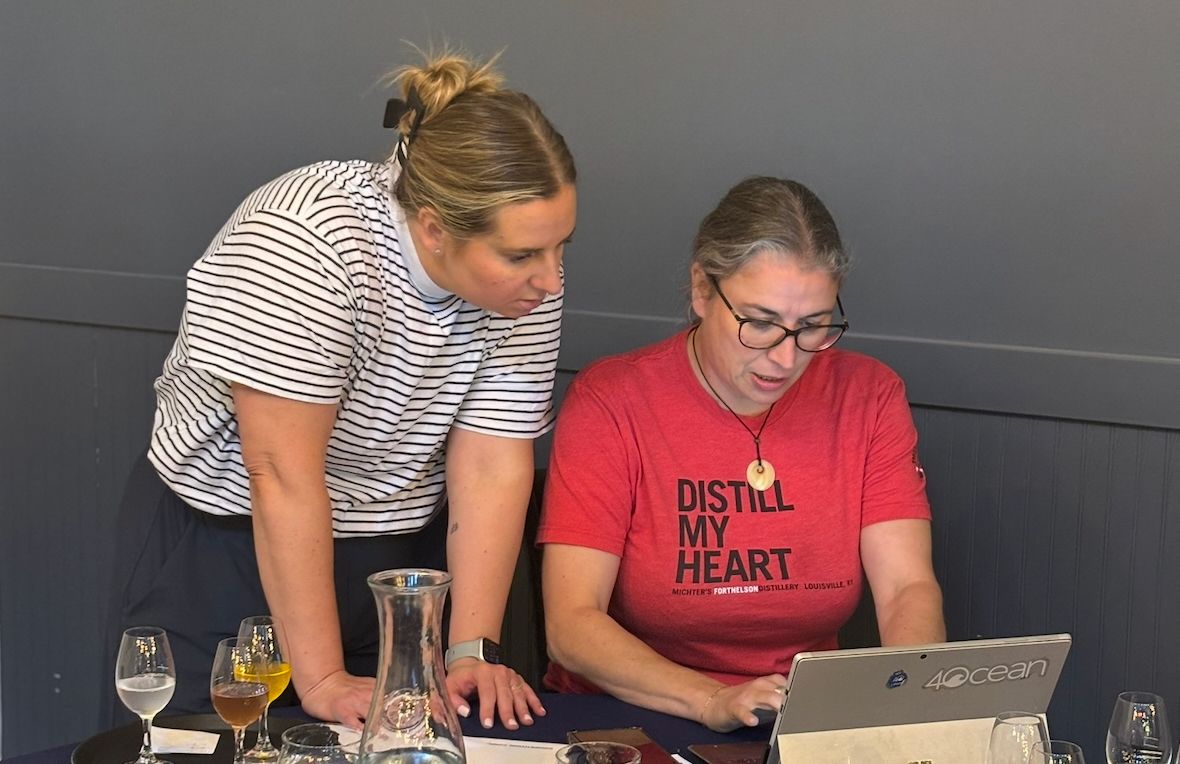We visited the major players in Saint-Péray plus highlight which sparkling and still wines shone out at tastings.
Saint-Péray, the southernmost appellation in the Northern Rhône valley, may nowadays be a relatively unknown wine-making area, but in the 19th Century its white and sparkling wines were revered by royalty including Russian Tsars and Queen Victoria.
Unsurprisingly with this pedigree, Saint-Péray was one of the first nine declared AOCs in France in 1936. It is the smallest AOC in the Rhône valley (apart from the single estate Chateau Grillet AOC) with the area under vines slowly increasing from a paltry 56 ha in the 1970s to currently just under 90 ha, producing around 3,000 hl of wine annually.
The Saint-Péray AOC produces exclusively white wine and sparkling wine using the methode Champenoise from the two permitted grape varieties Marsanne and Roussanne. Sparkling wine accounts for around 10% of total production at the moment and just a handful of producers and négociants are currently investing in producing a quality sparkling Saint-Péray.

Saint-Péray, the second smallest AOC in the Rhône, with 90 hectares under vine
The vine growing area is strongly influenced by winds coming from the hills of the Massif Central to the North and the imposing limestone outcrop of the Montagne de Crussol overlooking the village. This unique geographical position is key to the freshness in Saint-Péray whites and a prerequisite for the production of sparkling wine. Indeed, in the early 19th Century some of the still Saint-Péray white was purchased by the Champenois to bolster their produce in lesser vintages.
The soils in Saint-Péray are very varied, comprising elements of granite, sand, clay and/or limestone and, combined with aspect, altitude and orientation give rise to some excellent terroir-driven expressions of Marsanne and Roussanne.
Traditionally the Roussanne was used for sparkling wines because it attained ripeness easier, considered a bonus at the time – despite exploding bottles in the cellar after the tirage – and despite it being a trickier grape to grow with its susceptibility to mildew and general fickleness.

Nowadays growers such as Alain Voge prefer to use Marsanne for their sparkling wine and grow it at higher altitude on clay limestone soils to retain acidity. Harvesting is also done before the bulk of the white crop.
I tasted two excellent examples of sparkling Saint-Péray (see below), both made from 100% Marsanne and having spent three years on their lees following secondary fermentation in bottle.
Les Bulles d’Alain is made by the stalwart of Cornas, Alain Voge who has extensive holdings in Saint-Péray, and is the result of a passionate drive and sizeable new investment to produce a great example of sparkling Saint-Péray. The House of Chapoutier produces the Saint-Péray effervescent La Muse de RW and the first vintage released is the 2012. RW stands for the composer Richard Wagner who allegedly was a great fan of sparkling Saint-Péray but apparently failed to settle his bills with the ancestors of the Chapoutier family! Quite the hommage!
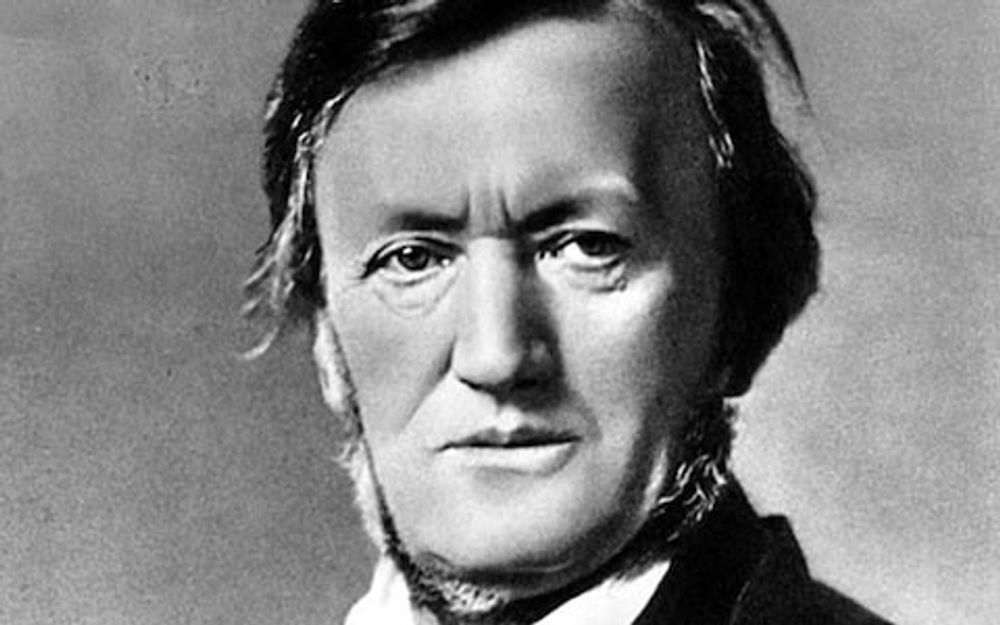
“Put it on my account!” Saint-Péray fan Richard Wagner
My two standout sparkling Saint-Péray stars
2013 Les Bulles d’Alain by Alain Voge. Vigorous mousse, rich honeyed biscuity nose followed by a full-bodied entry. Nicely poised middle palate with a savoury finish. Excellent grip and would work very well with food.
2012 Saint-Péray effervescent La Muse de RW. First vintage produced; Deep golden with a maturing biscuity nose, some yellow fruits. Rich expansive palate with nutty overtones and salty note. Long with lovely balance
Both wines cost around €18 rrp on release

Saint-Péray still white
The current volume of white wine production in Saint-Péray is roughly about 3% of the total Chateauneuf-du-Pape AOC wine output and about the same as the Hermitage AOC. By contrast, more than 40% of all Hermitage AOC wine is exported, whereas Saint-Péray exports a meagre 14%, a reflection of its current relative standing in the international market.
The vineyard area in Saint-Péray has seen a steady if slow increase over the years, and more suitable land is being brought into production. Indeed, some producers point out that additional top vineyard sites can still be identified and brought into production.
Many current Saint-Péray producers are based in the neighbouring AOCs of Cornas and Saint-Joseph, having bought vineyards here in the past or inherited land through marriage.
Alain Voge, renowned vigneron in Cornas for many decades and one of the ‘old garde’ who put Cornas on the map, has been instrumental in raising the profile of Saint-Péray in the last few decades, since 2004 with the expert help of ex-Chapoutier wine advisor and current co-owner and winemaker Albéric Mazoyer. The Voge holdings in Saint-Péray stand at 5.5 hectares, making it one of the larger producers in the appellation. Since 2016 the Domaine as a whole has been biodynamically certified.
Unusually, the Domaine prefers to only use Marsanne plantings for its bottlings. From the lieu-dit Hongrie planted with 50 year old vines, Voge produces his Saint-Péray Ongrie, previously called Cuvée Boisée and Terres Boisées – a reference to the barrel fermentation that Alain Voge pioneered for this wine in the early 1980s. Whereas previously this wine sometimes struggled to fully absorb the oak influence, nowadays the wine is beautifully balanced and fresh with melon and orchard notes, skilfully absorbing the 30% new oak elevage. Limestone and clay elements in the soil ensure the fresh mineral mouthfeel of this wine.
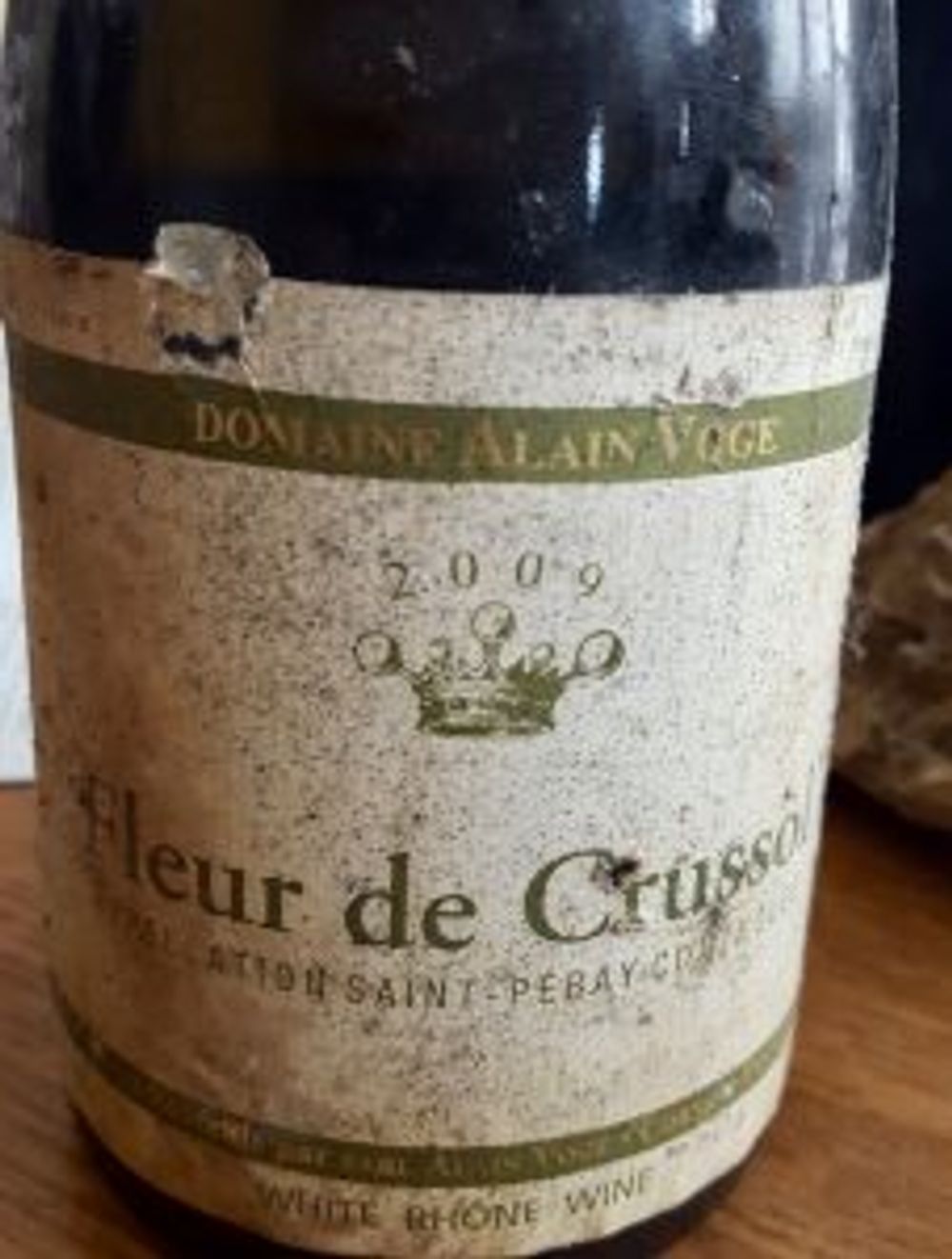
The top white in the Voge cellar is the Saint-Péray Fleur de Crussol from the lieu-dit La Côte, facing the Château de Crussol limestone outcrop of the Massif de Crussol. The 80 year old Marsanne vines are some of the most venerable in the appellation and the limestone elements in the soil impart a distinctive mineral nuance to the wine. The Fleur de Crussol ages beautifully as testified by a golden, nutty 2009 tasted at the Domaine during my visit.

In contrast to Alain Voge, the Domaine du Tunnel, based in Saint-Péray, is a relative newcomer being established as recently as 1994 by Stéphane Robert on the hillsides overlooking the village of Saint-Péray, and incorporates an old disused railway tunnel (hence the name), now part of the winery high up in the Barras lieu-dit.
A complete outsider, Robert came to Saint-Péray as a teenager and in his twenties gradually started building up his vineyard holdings through outright acquisitions and vineyard rentals, now extending to a total of 11 ha covering Cornas, Saint-Joseph and 4 ha in Saint-Péray, the latter split evenly between Marsanne and Roussanne plantings.
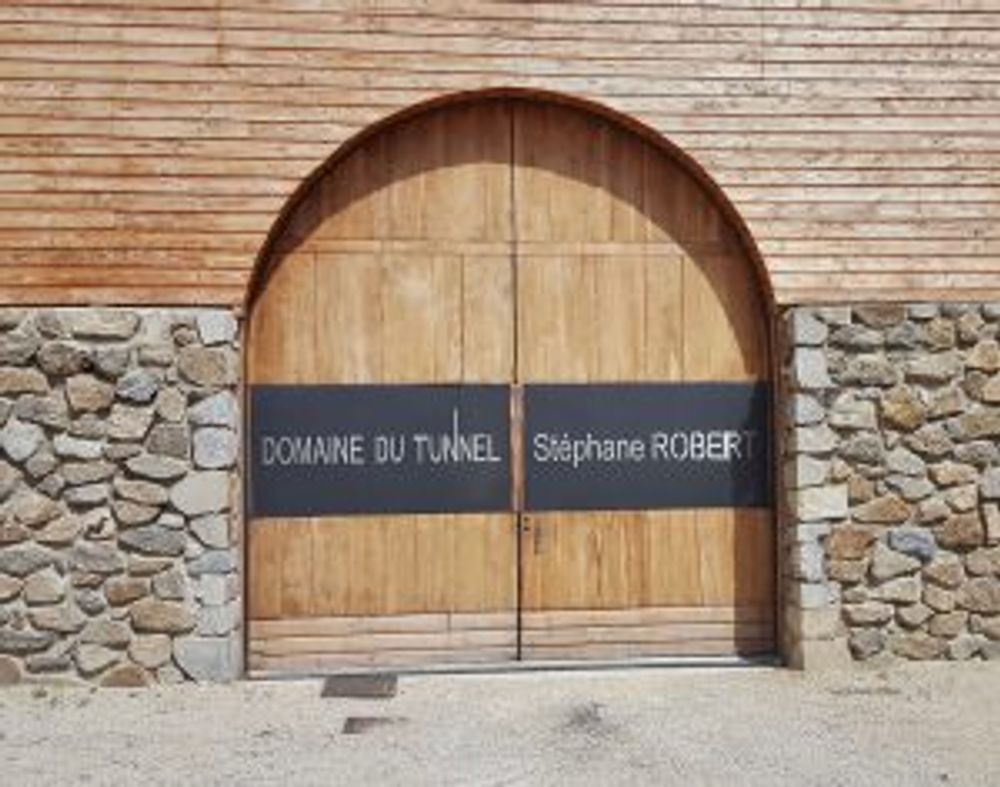
Domaine du Tunnel produces 4 Saint-Péray cuvées: a cuvée Marsanne, a cuvée Roussanne, a cuvée Prestige (80% Marsanne, 20% Roussanne) and more recently a very limited cuvée Pur Blanc made from 80 to 100 year old Marsanne vines situated in a walled vineyard in the l’Arzalier lieu-dit in the centre of the Saint-Péray village.
Fermentation of the wines is partly in stainless steel and partly in oak, with elevage in up to 20% new oak. The emphasis throughout the range is on purity, balance and elegance and the 2016 wines are all very successful, with the cuvée Prestige a particular standout showing beautifully intense yellow fruits and a discreet tension between power and elegance.

Fabrice Gripa
Based in Mauves, Domaine Bernard Gripa is one of the standout producers in the region with vineyard holdings in both Saint-Joseph (11 ha) and Saint-Péray (5 ha), unusually for this area producing roughly equal amounts of both red and white wine.
The Domaine is now mostly run by Fabrice Gripa, an exuberant vigneron who exudes a quiet confidence when discussing his various cuvées. The consistency and quality of the wines here in both colours is quite remarkable and unsurprisingly these wines have acquired a loyal following.
The Saint-Péray Les Pins, a blend of 70% Marsanne and 30% Roussanne comes from vineyards planted in the 1940s, 50s and 60s and while full bodied, shows a freshness and touch of minerality which makes it an excellent food wine. Again, calcareous soils contribute to the characteristic crispness of this wine that develops beautifully over at least a decade as exemplified by a wonderfully fresh 2009 Les Pins tasted at the Domaine.

The top Saint-Péray Les Figuiers is a blend of 60 to 70% Roussanne and 30 to 40% Marsanne and comes mostly from the Putiers lieu-dit where the vines average 60 years of age. The wine is raised in new to 5 year old oak barrels and demi-muids. A step up in complexity and richness, this wine shows intense honey and lavender notes and develops creamy lanolin notes with age. The 2002 Les Figuiers I had the privilege to taste showed that with age this wine can develop into a world class white that would comfortably sit alongside renowned aged white Burgundies.
In addition to the small to medium sized family Domaines in the Saint-Péray AOC, many of the well known Rhône négociants also have either vineyard holdings or buy in grapes to produce some excellent, food friendly and usually good value wines almost exclusively from Marsanne. The House of Chapoutier produces several cuvées ranging from the elegant, fruit forward Saint-Péray Les Tanneurs to the honeyed and mineral inflected Saint-Péray lieu-dit Hongrie.
The négociant Ferraton produces the Saint-Péray Le Mialan from two individual parcels, the name a reference to the Mialan river that separates the Château du Crussol from Saint-Péray village. The 2016 cuvée has a bright light golden hue with notes of honey and thyme and a textured savoury finish with a round and smooth mouthfeel.
The local name for Marsanne around Saint-Péray is Sauvagère, a reference to the ability of Marsanne to ruthlessly establish itself in the limestone rocks. Partly from Domaine fruit, Paul Jaboulet Ainé produces the Saint-Péray Les Sauvagères, raised in equal parts in oak barrel, stainless steel and concrete egg. The 2016 version is very successful showing a bright golden colour with a crisp savoury finish – an excellent accompaniment to local goat’s cheese.
As so often happens when one is exposed to a relatively unfamiliar wine region, the process of discovering new winemakers who masterfully exploit and guide the local terroir to express the essence of the local grape varieties, is unerringly exciting and rewarding. The appellation of Saint-Péray may be petite in surface area, but it is capable of producing world class whites that should be more widely appreciated outside of France as excellent food friendly wines. A little gem indeed.
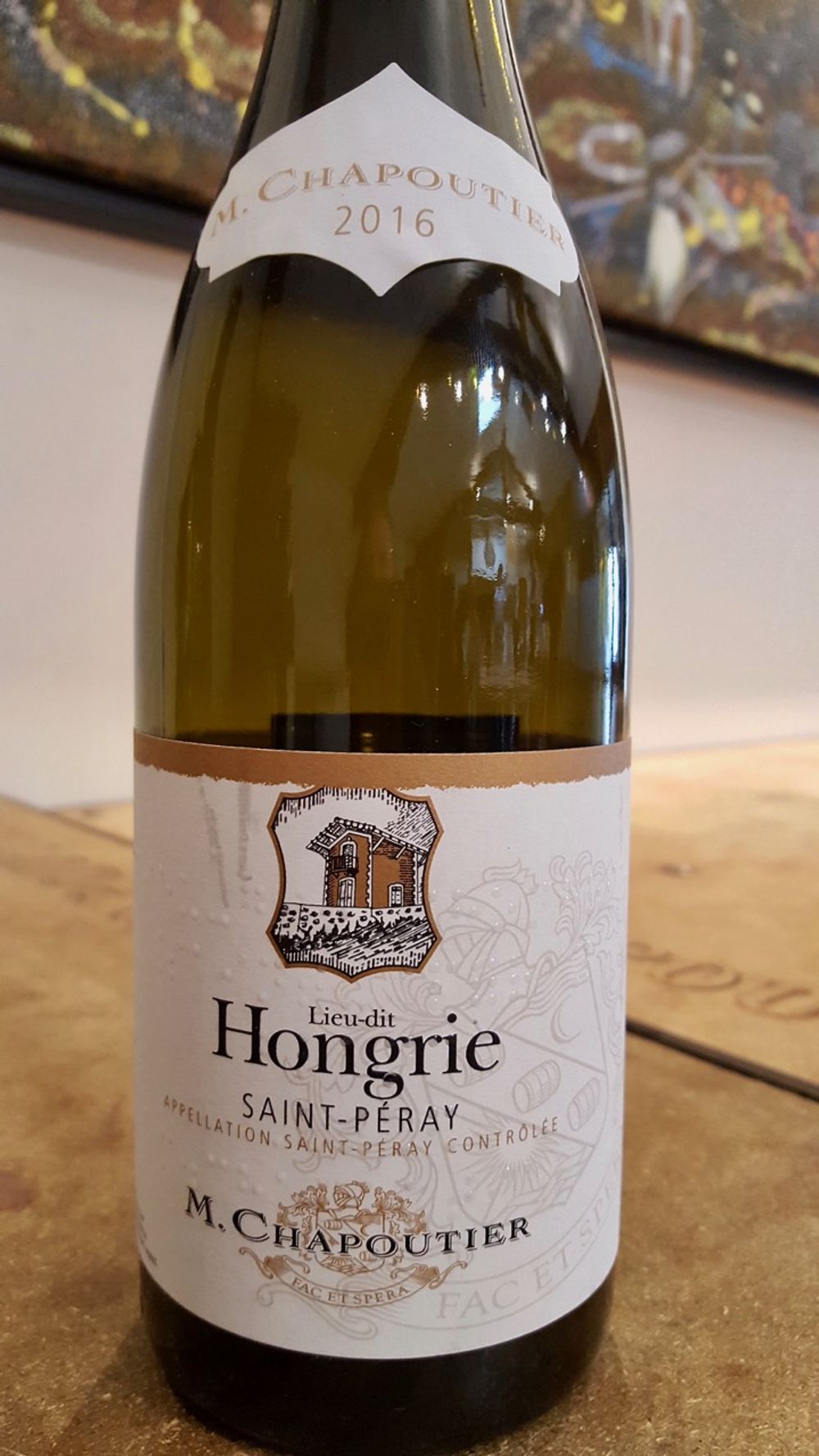
My five standout still Saint-Péray stars
2016 Domaine du Tunnel, Saint-Péray Cuvée Prestige
2016 Domaine Bernard Gripa, Saint-Péray Les Pins and Les Figuiers
2016 Chapoutier, Saint-Péray Hongrie
2015 Alain Voge, Saint-Péray Fleur de Crussol
2016 Domaine Clape, Saint-Péray

